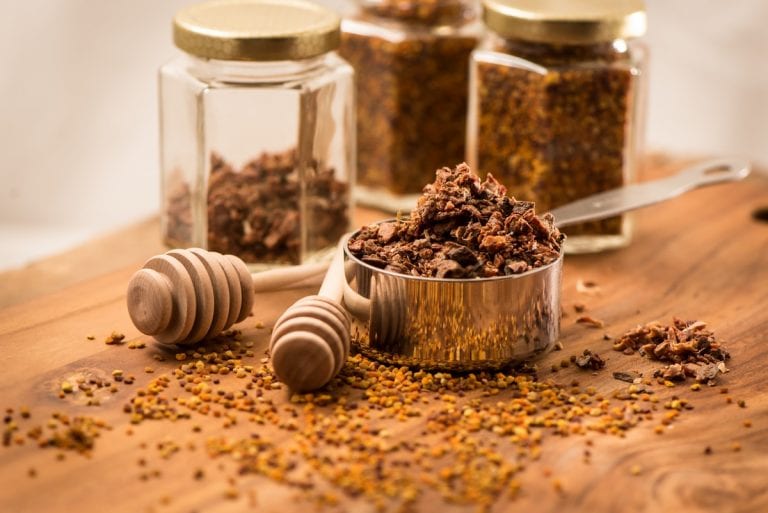There are many terms belonging to the world of honey, from bees with their hierarchies, to products to the various processing stages. Before starting on a journey discovering the best Italian beekeeping companies, it's smart to introduce some keywords to our readers. This is why we're collecting them all together here, in an essential glossary for beginners wishing to approach this sector in a non-superficial manner.
Smoker: an instrument that allows the beekeeper to calm the bees and, consequently, approach the insects without any danger
Beehive: place where bees live and which includes the apiary and the bees themselves
Bee: scientific name Apis Mellifera, insect of the Apidae family
Working bee: female bee that's sterile by pheromones (biochemicals produced by exocrine glands) inhibitors of the queen bee of the beehive
Queen bee: adult, fertile, female individual of the bee colony. Normally it is the mother of all the bees present in the hive
Apiary: place where the hives are placed
Beekeeping: breeding of bees for the purpose of using beehive products such as honey and royal jelly
Beekeeper: bee breeder engaged in honey production
Hive: wooden box where bees live
Pollen gathering: phase in which the pollen and nectar are collected by the bees
Beeswax: product secreted by worker bees through the abdominal glands. It is used to construct cells
Crystallization: natural transformation of honey from liquid form to a solid state due to the formation of sugar crystals. Crystallized honey has a rather pasty consistency.
Decanting: period of rest allowing the honey to eliminate any impurities and unwanted substances present in the honey
Uncapping: initial phase of bee extraction consisting in the removing of the wax layer sealing the cells
Honeycomb: grouping of hexagonal wax cells constructed by bees, containing pollen and honey for the sustenance of the larvae, or royal jelly for the sustenance of the queen bee
Wax sheet: thin wax sheet with hexagonal imprints on which the bees build the honeycomb
Drone: male bee born from unfertilized eggs of the queen bee
Mead: alcoholic beverage with ancient origins produced by the fermenting water and honey
Shallow box: box containing the honeycombs and placed inside the hive
Honeydew: substance produced by the metabolism of aphids and other small insects that feed on the sap of some plants from which the bees, in the absence of nectar, produce honey
Honey: produced by bees from sugary substances that they collect in nature: nectar produced by flowering plants and honeydew. Once back in the beehive the gatherer bee regurgitates the nectar collected in the crop (or honey stomach), which has now become very liquid. The worker bees operate a sort of digestion of the nectar for about 30 minutes; thanks to their enzymes, the complex sugars present in the nectar are broken down into simple sugars. To avoid fermentation, honey must at this point be dehydrated; for this purpose, it is deposited in thin layers on the wall of the cells. The ventilating bees produce a constant air flow that allows the water to evaporate. This process lasts for about 36 days, after which the honey is placed in other cells that, only when completely full, will be capped with wax.
Nectar: sugary liquid produced by flowers to attract pollinating insects
Polyfloral: honey obtained from different botanical origins
Royal jelly: product secreted by the nurturing worker bees (aged between the 5th and the 14th day of life) through glands placed on their head. The substance is light yellow and used as food for the young larvae and the queen bee
Pollen: yellowish powder present in plants that reproduce through a seed. The bees collect the pollen, take it to the hive and use it to feed the larvae
Propolis: resinous substance of the buds and bark of plants collected by bees. After harvesting, the bees process the propolis with the addition of wax, pollen and enzymes produced by their own organism
Swarm: group of bees in transit from an old beehive to a new colony
Honey extraction: extraction of honey from honeycombs by centrifugal force
Storage: storage of honey in the warehouse. To maintain all its organoleptic and aromatic properties, honey needs to be kept away from sources of light and heat.
Frame: wooden frame holding the sheet of pre-printed wax in hexagonal cells (wax sheet) on which the bees build the honeycomb
Unifloral: honey coming from a single botanical origin
by Michela Becchi


 Dom Perignon for dogs and sleepless rock stars: the bizarre requests to the world’s best hotel manager
Dom Perignon for dogs and sleepless rock stars: the bizarre requests to the world’s best hotel manager The oil always moves north, reaching England. How the map of olive trees is changing due to climate change
The oil always moves north, reaching England. How the map of olive trees is changing due to climate change The Nobel Sandwich we tried at CERN, just steps from antimatter
The Nobel Sandwich we tried at CERN, just steps from antimatter The two young talents from Gattinara revolutionising Italian cuisine
The two young talents from Gattinara revolutionising Italian cuisine Here is the Meditation Wine of the Year according to Gambero Rosso
Here is the Meditation Wine of the Year according to Gambero Rosso







